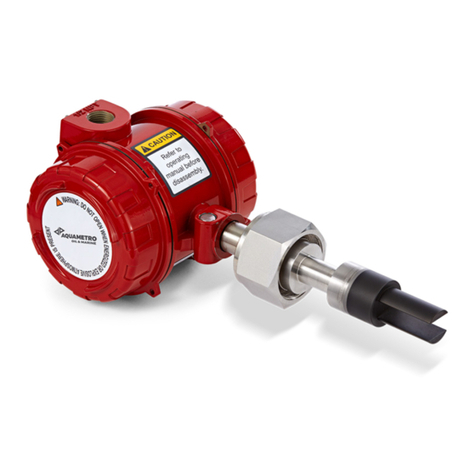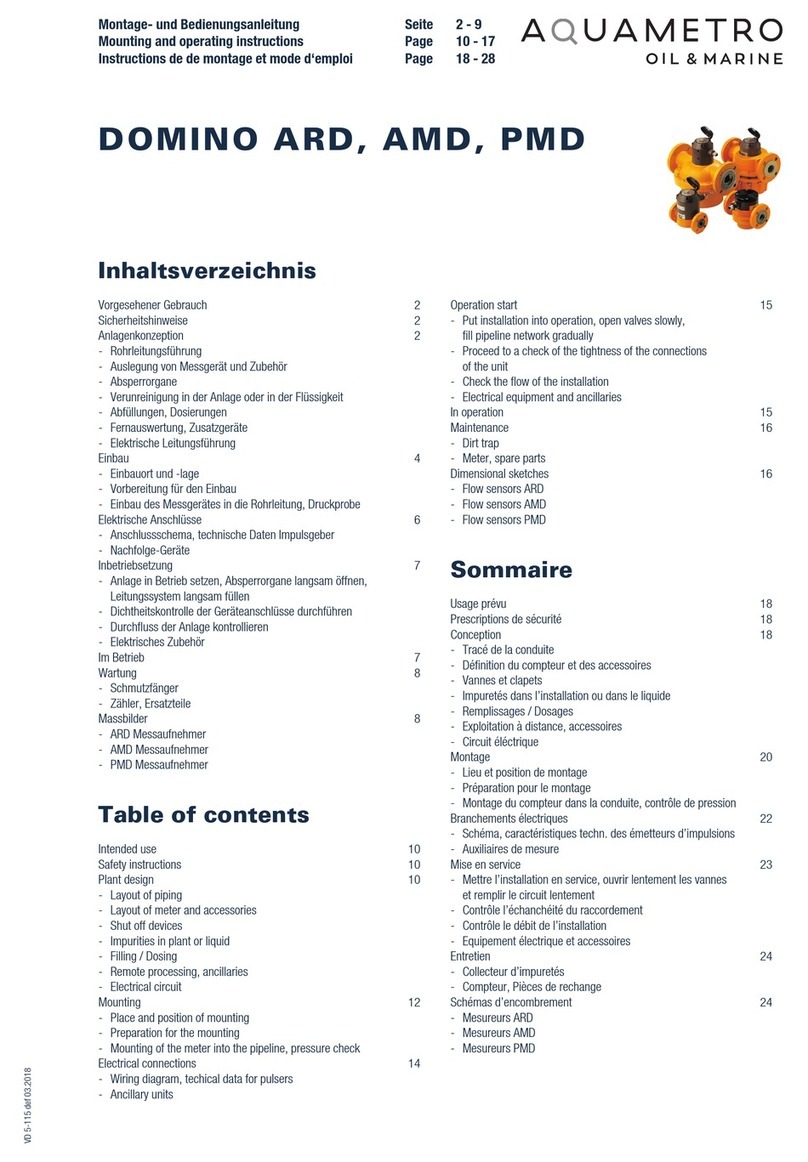Aquametro Oil & Marine CONTOIL DN15 Service manual
Other Aquametro Oil & Marine Measuring Instrument manuals

Aquametro Oil & Marine
Aquametro Oil & Marine Viscomaster User manual

Aquametro Oil & Marine
Aquametro Oil & Marine CONTOIL DFM Series Service manual

Aquametro Oil & Marine
Aquametro Oil & Marine CONTOIL VZF II Service manual

Aquametro Oil & Marine
Aquametro Oil & Marine DOMINO ARD Series Quick start guide

Aquametro Oil & Marine
Aquametro Oil & Marine CONTOIL VZD2 Service manual

Aquametro Oil & Marine
Aquametro Oil & Marine CONTOIL VZF II DN 15 Guide

Aquametro Oil & Marine
Aquametro Oil & Marine CONTOIL VZP 4 Service manual
Popular Measuring Instrument manuals by other brands

Powerfix Profi
Powerfix Profi 278296 Operation and safety notes

Test Equipment Depot
Test Equipment Depot GVT-427B user manual

Fieldpiece
Fieldpiece ACH Operator's manual

FLYSURFER
FLYSURFER VIRON3 user manual

GMW
GMW TG uni 1 operating manual

Downeaster
Downeaster Wind & Weather Medallion Series instruction manual

Hanna Instruments
Hanna Instruments HI96725C instruction manual

Nokeval
Nokeval KMR260 quick guide

HOKUYO AUTOMATIC
HOKUYO AUTOMATIC UBG-05LN instruction manual

Fluke
Fluke 96000 Series Operator's manual

Test Products International
Test Products International SP565 user manual

General Sleep
General Sleep Zmachine Insight+ DT-200 Service manual















